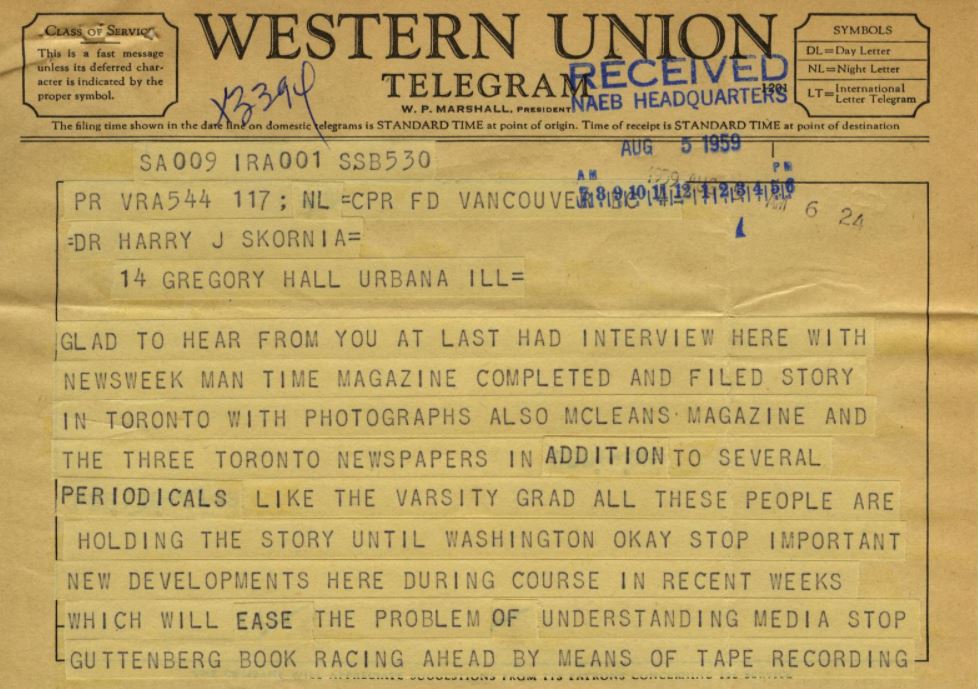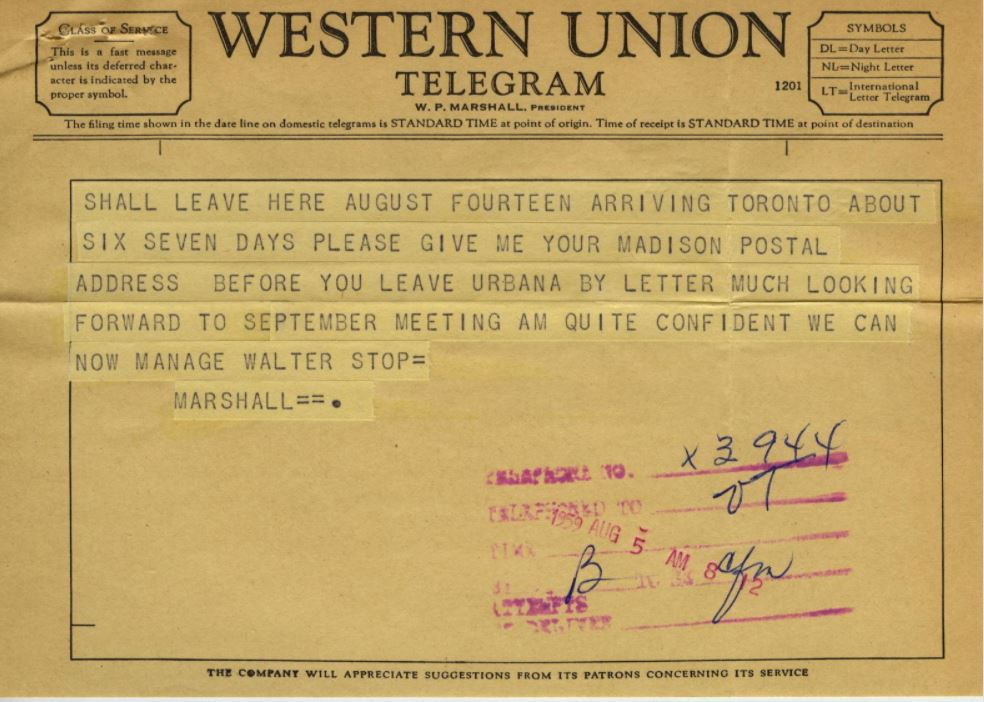A highly interesting post in the New Explorations blog by Clinton Ignatov, ‘Bergson on Machinery‘, cites passages from Maritain’s early (1913) critique of Bergson. Ignatov does not tackle the critical question of what these 1913 passages have to with the topic of ‘Bergson on Machinery’, which Ignatov broaches in his post only in relation to much later Bergson and Maritain texts. But these 1913 passages do indeed have clear parallels with the work of Marshall McLuhan — suggesting that a relation with machinery and technology must exist.
This post will examine the first passage from Maritain on Bergson as cited by Ignatov and attempt to show some of its connections to the work of McLuhan. These connections are clear even though McLuhan may never have read anything at all of Bergson — other than snippets in the work of others. Nor, despite his great interest in Maritain, does he appear to have read Maritain’s 1913 critique, which forms the backbone of Ignatov’s post.
Two passages from Maritain’s early critique are cited in the post, each of which serves to indicate the tradition which supplied McLuhan’s explanans until he was almost 50 and which then continued for the remainder of his life as the critical explanandum. Put otherwise, Maritain’s two passages indicate a certain medium within which McLuhan’s work functioned until 1958. With his admonition that year, above all to himself, that “the medium is the message”, what had been the ground of his thought became figure or effect. His efforts would henceforth be dedicated to the specification of this figure/effect by working back from it in detective fashion to dis-cover and specify its ground and cause. But since this was a question of communication, this meant that he had to ‘put on’ the role of his reader or audience — “the multitude” — and ask with it, or them, how the required retracing and retrieval might be achieved. Achieved, that is to say, by and for us!
Ignatov’s first citation from Maritain’s 1913 critique reads as follows:
Here we have it then; the most thorough-going, most intelligent anti-intellectualism, — Bergsonian anti-intellectualism, — compromises and destroys man’s freedom just as much as the [hyper] intellectualism of Parmenides, Spinoza, Leibnitz and Hegel. Let us realize that intelligence alone can correct intelligence and that if we wish to cure the soul of the false intellectualism of Spinoza and Hegel, which measures being upon thought and to which the dogmatism of our pseudo-savants bears but a faint and crude resemblance, there is only one means, only one remedy: authentic intellectualism — submission to the real — which measures thought upon being.
These two lengthy sentences might well be taken to describe McLuhan’s developing intellectual position from around 1930 to around 1960 — roughly, from age 20 to age 50. For just as Maritain sets out three fundamental positions — “anti-intellectualism”, hyper intellectualism and “authentic intellectualism” — so McLuhan knew of comparable threefold classifications in two other figures he studied intensively in his university years. Rupert Lodge, his mentor at the University of Manitoba, proposed a “comparative method” for philosophy that would work with three fundamental types — realism, idealism and pragmatism. Meanwhile A.N. Whitehead’s Science and the Modern World, a book McLuhan studied with Lodge, put forward a similar typology of realism, idealism and organism. For Lodge everything depended on a bracketing of the question of the relative validity of the three kinds so that the typology itself could be studied methodically. Whitehead, in contrast, emphasized study of the third type as the required key to unlock the world of human experience in comparable fashion to the unlocking of nature that had been achieved since 1600. Broadly speaking, McLuhan leaned more to Whitehead’s emphasis until 1958 and thereafter more to Lodge’s.
McLuhan’s Cambridge PhD thesis from 1943 traced a related threefold to those of Maritain, Lodge and Whitehead. By compiling secondary sources, he described the complicated history of and between the three trivial arts of rhetoric, dialectic and grammar over the 2000 years from classical Greece in 400 BC to Elizabethan England in 1600 AD.
In all four cases — Maritain, Lodge, Whitehead and McLuhan — the threefold classification turned on the relation of mind to fact, hence on the questions of whether human beings can know truth and, if so, just how. But McLuhan had always been suspicious that philosophy was too narrow a field for the investigation of human experience. Hence his decision to major in English at Manitoba, rather than philosophy with Lodge, and his attraction to the Cambridge English School where the attempt was being made to understand the ambiguities of language as the key to understanding human life in general. Hence also his choice to examine the trivial arts in his Cambridge PhD thesis rather than philosophical classifications like those of Maritain, Lodge and Whitehead.
That 1943 thesis, together with its immediately following ‘An Ancient Quarrel in Modern America’ (originally a 1944 lecture), summed up his progress in developing this line of thought. The idea was to investigate the possibilities of a ‘trivial’ threefold approach to education (very broadly conceived as “the classroom without walls”) in an attempt to illuminate both the methodical classification itself and the objects of its investigation ranging from individual works to historical periods.
Of course McLuhan’s work greatly expanded and somewhat transformed over the three decades between 1930 and 1960 through his exposure to — and continuing rumination on — Giedion and Lewis, French symbolist poetry, Eliot and Pound, cybernetics, film theory and Joyce. But how was all this to apply to life and, perhaps, transform the world as the world had, for good and ill, repeatedly been transformed by, in turn, language, literacy, printing and electricity? This was the great question embedded in the 1958 admonition, “the medium is the message”, and the potential answer to it — although never without the shadow of that other potential of global disaster — offered a unique hope that McLuhan would pursue for the remaining 20 years of his life:
The ideal Marriage of Mercury and Philology, of spiritual values and perfected method, will be consummated, if ever, in the electronic age. (The Humanities in the Electronic Age, 1961)

